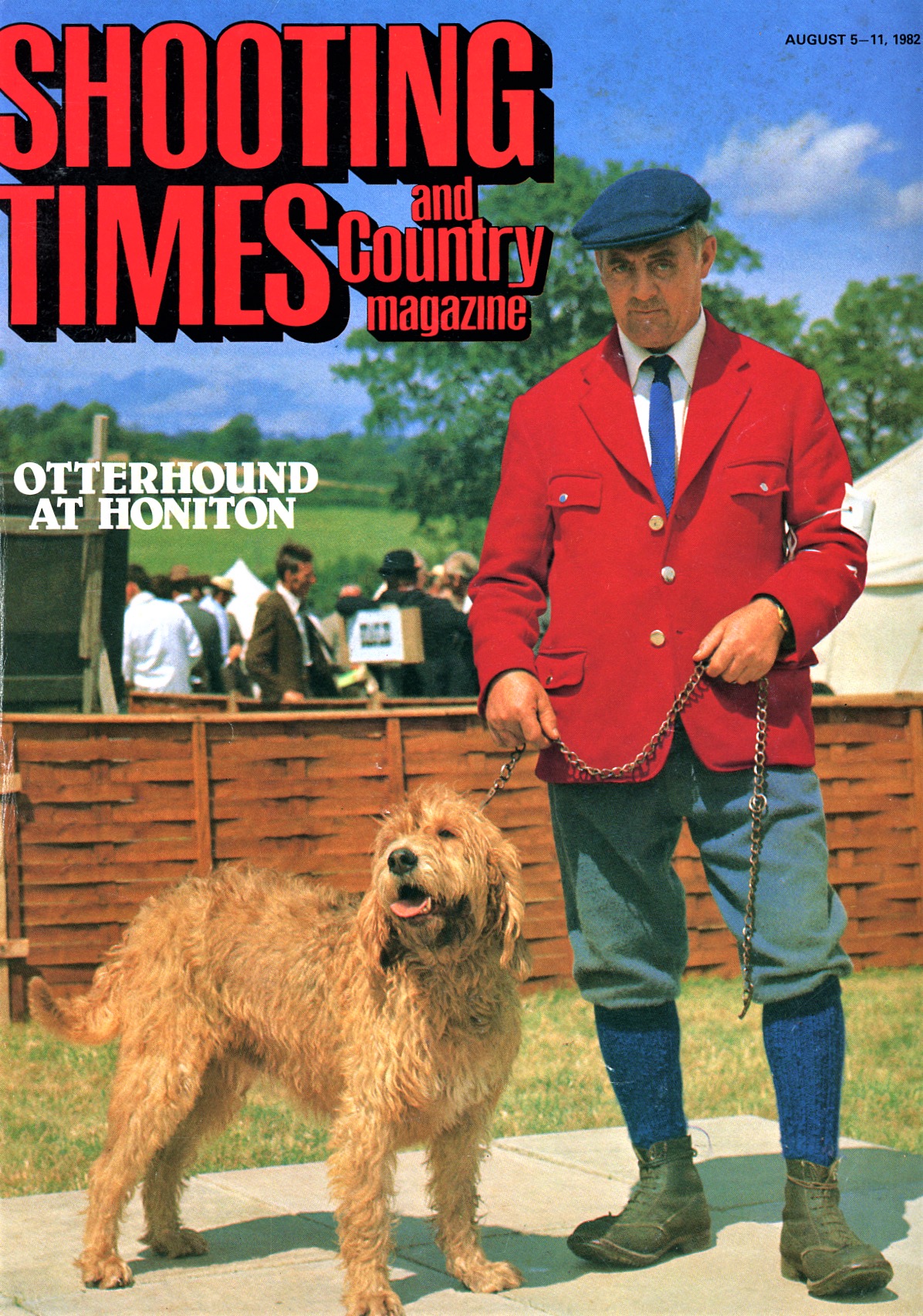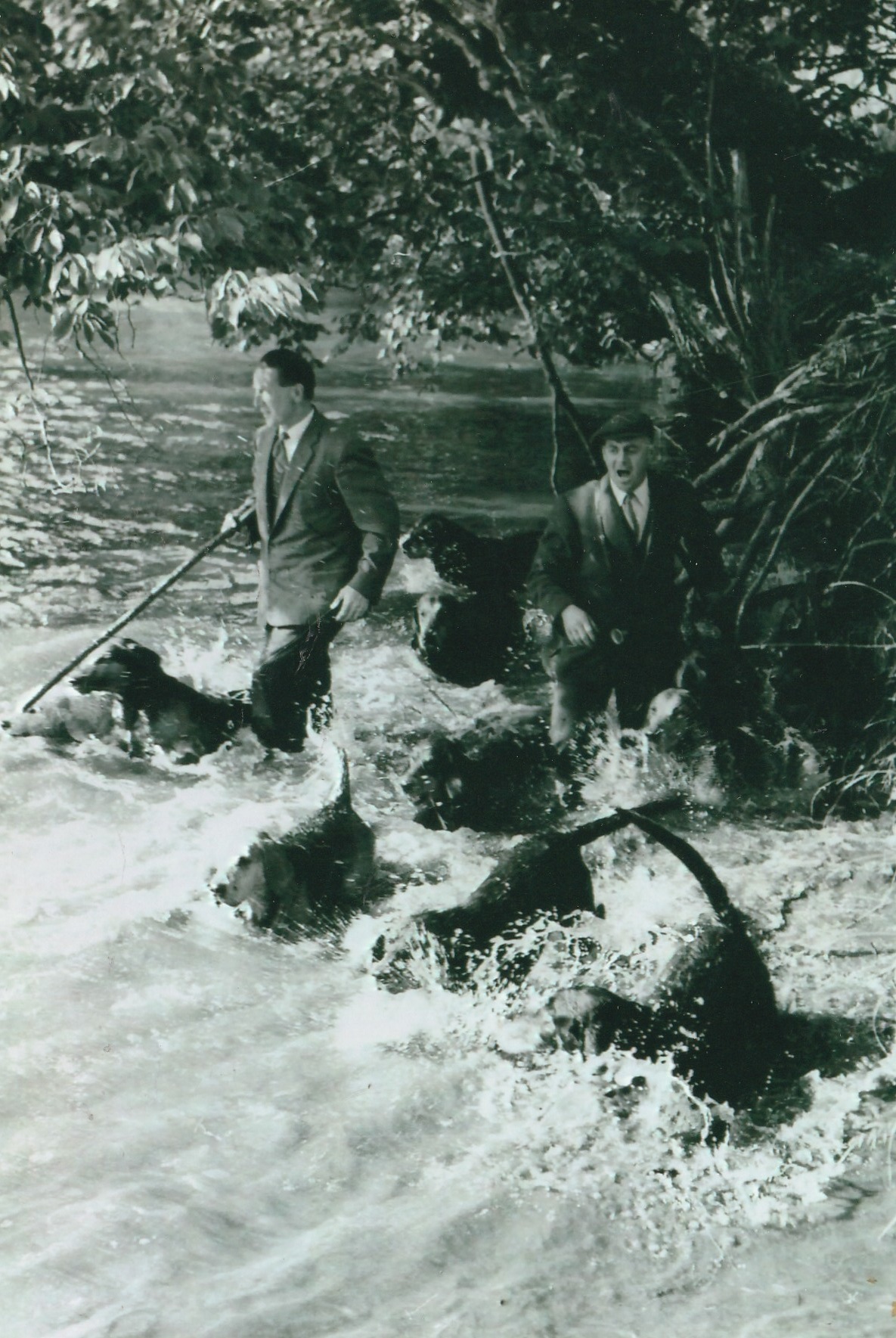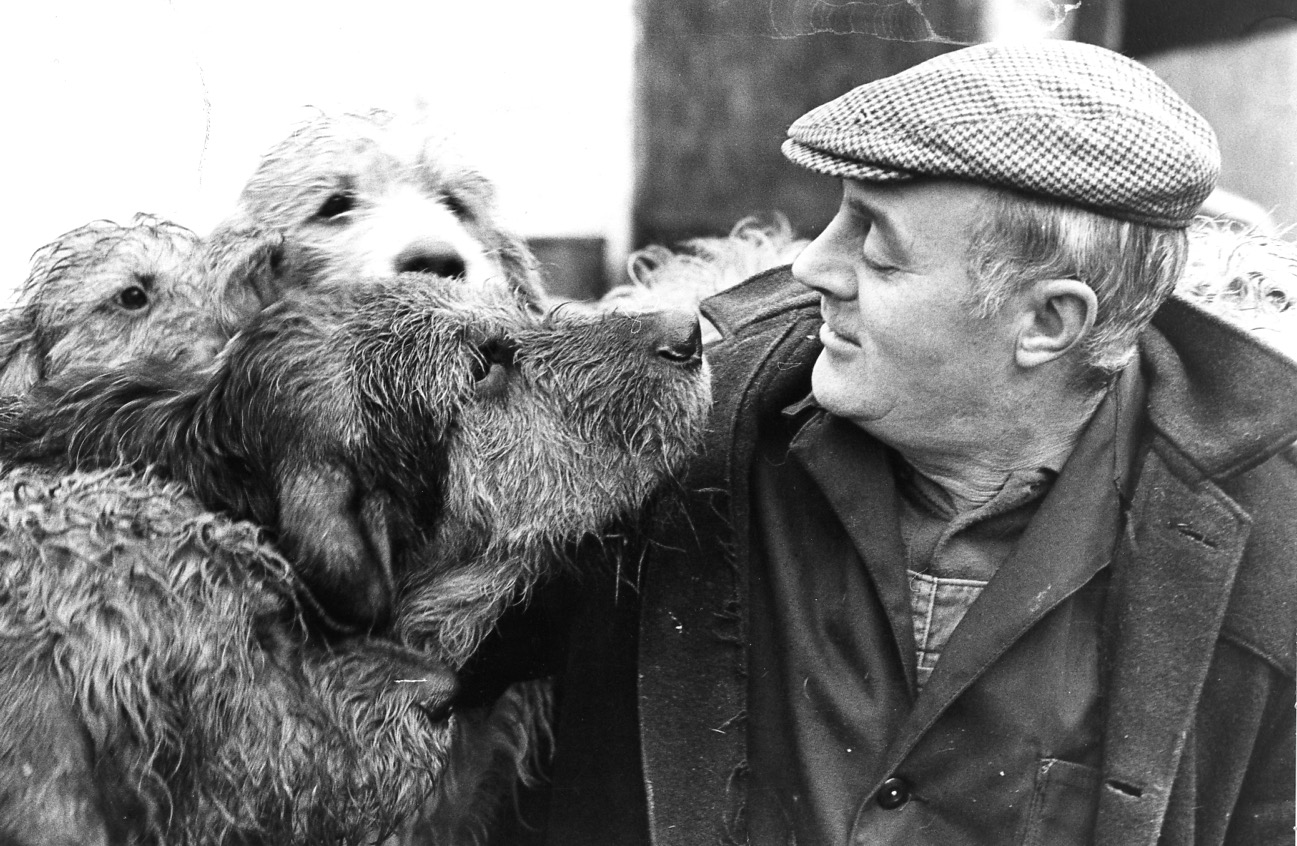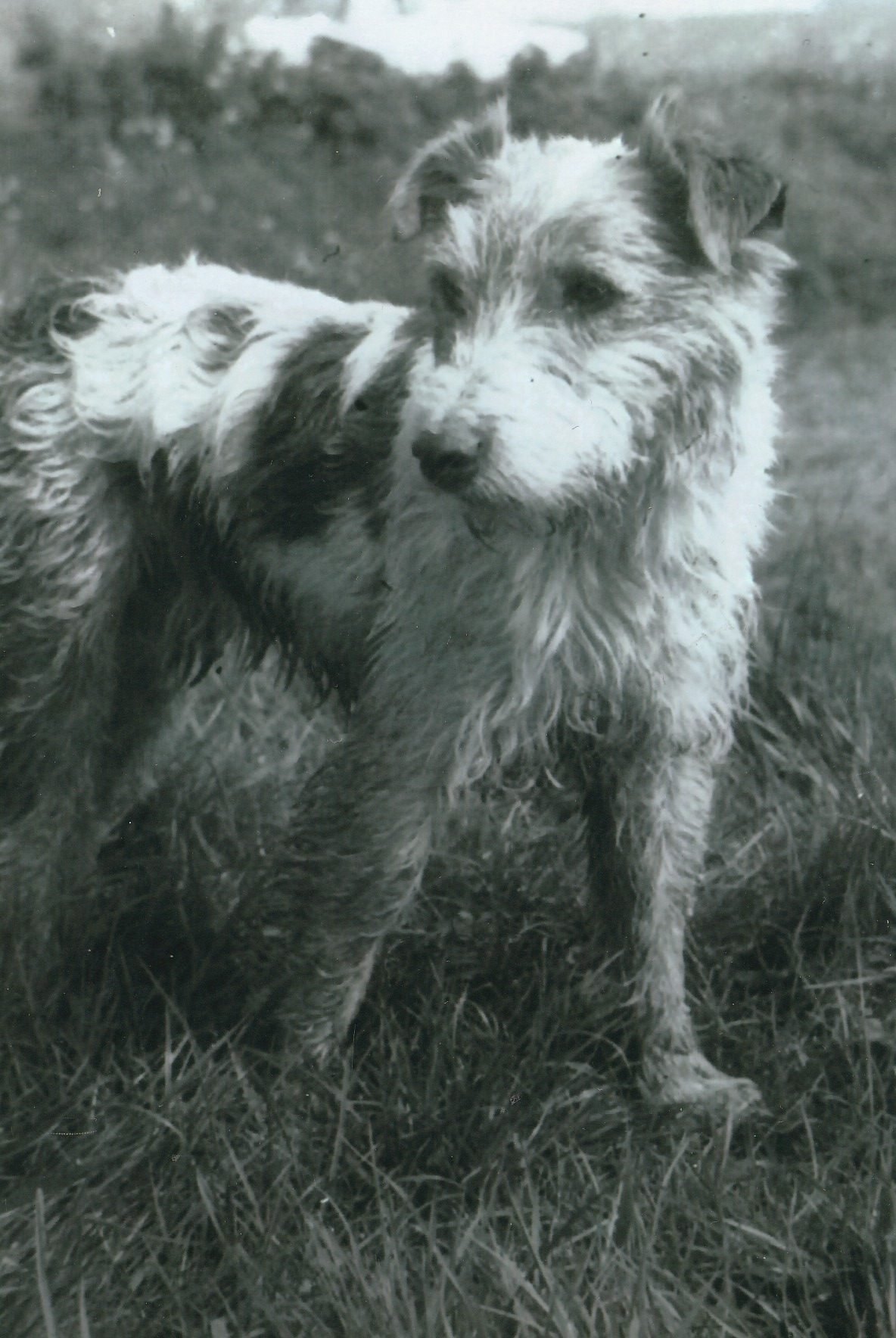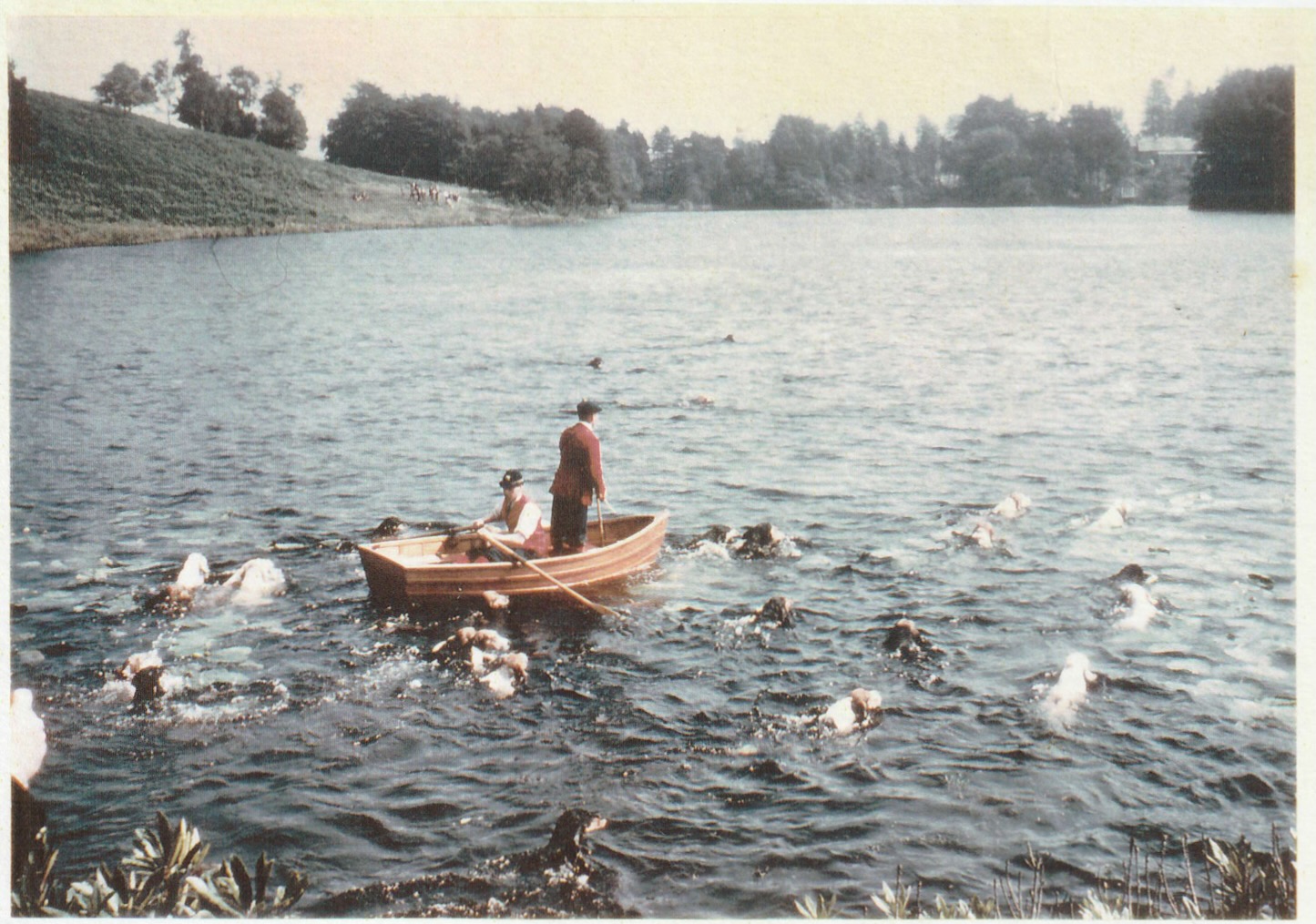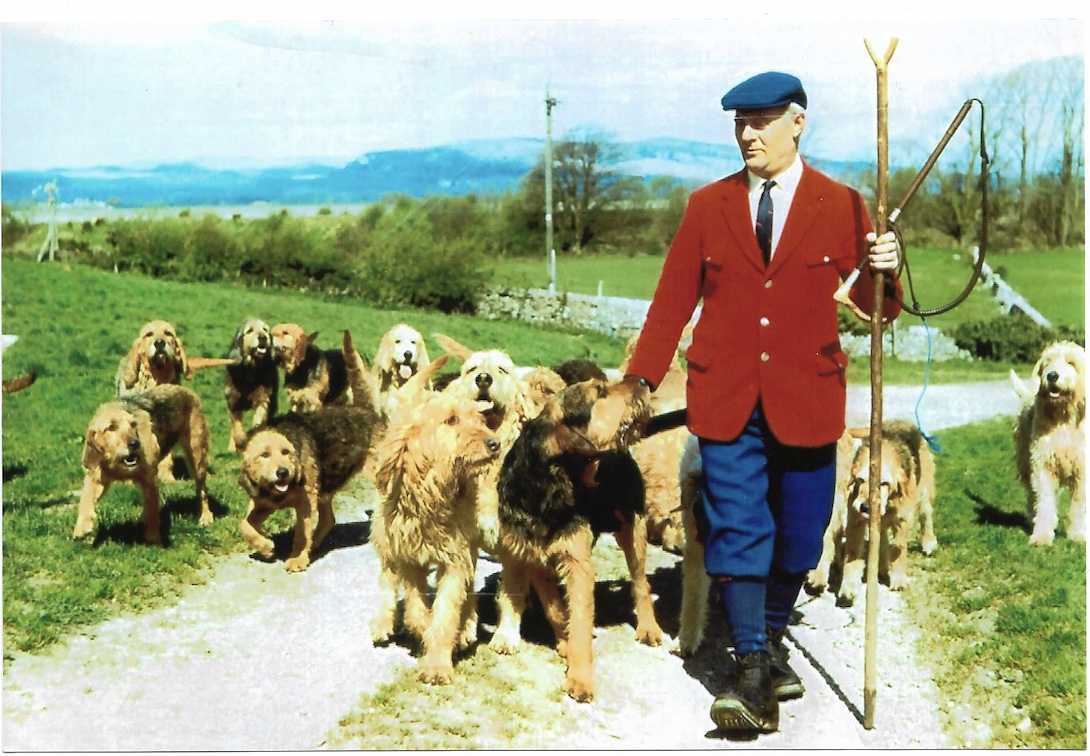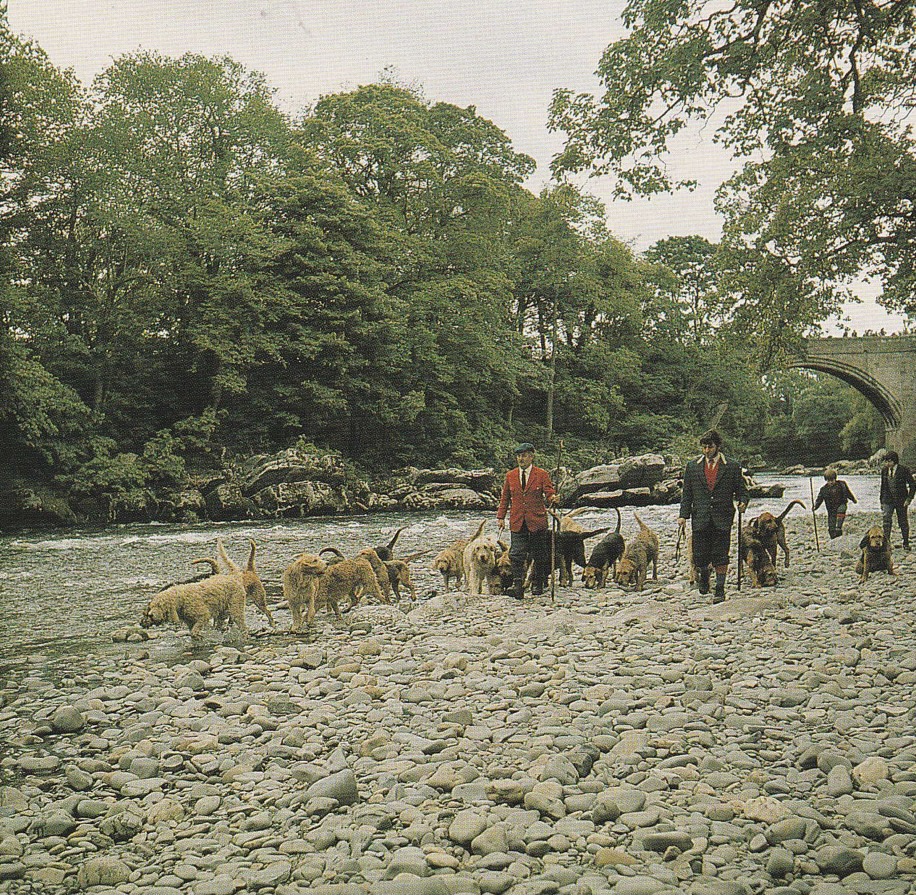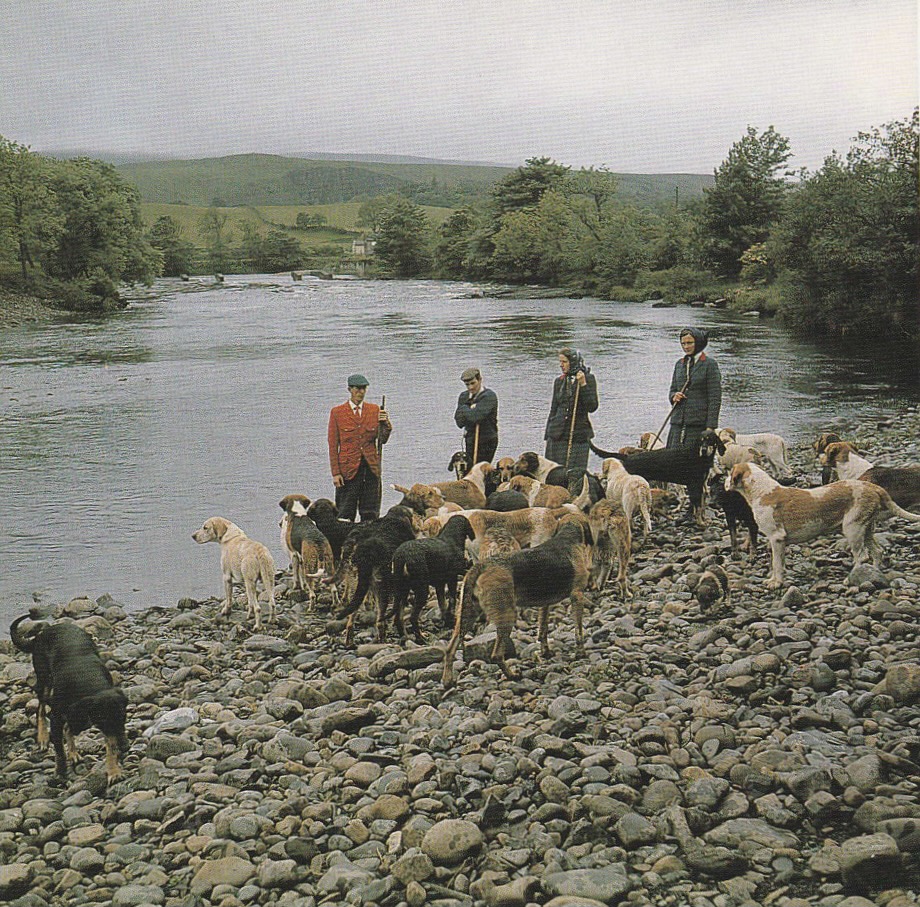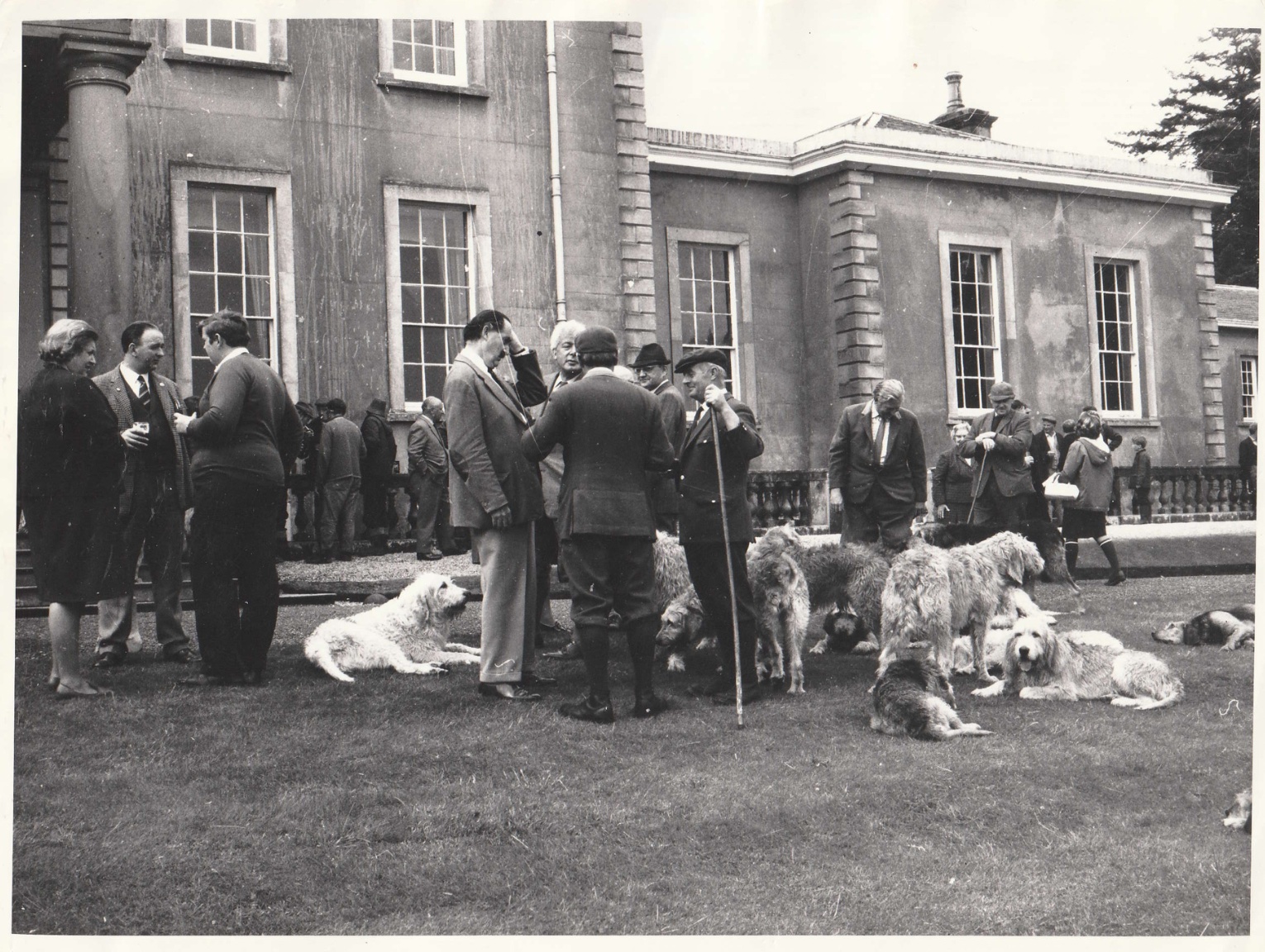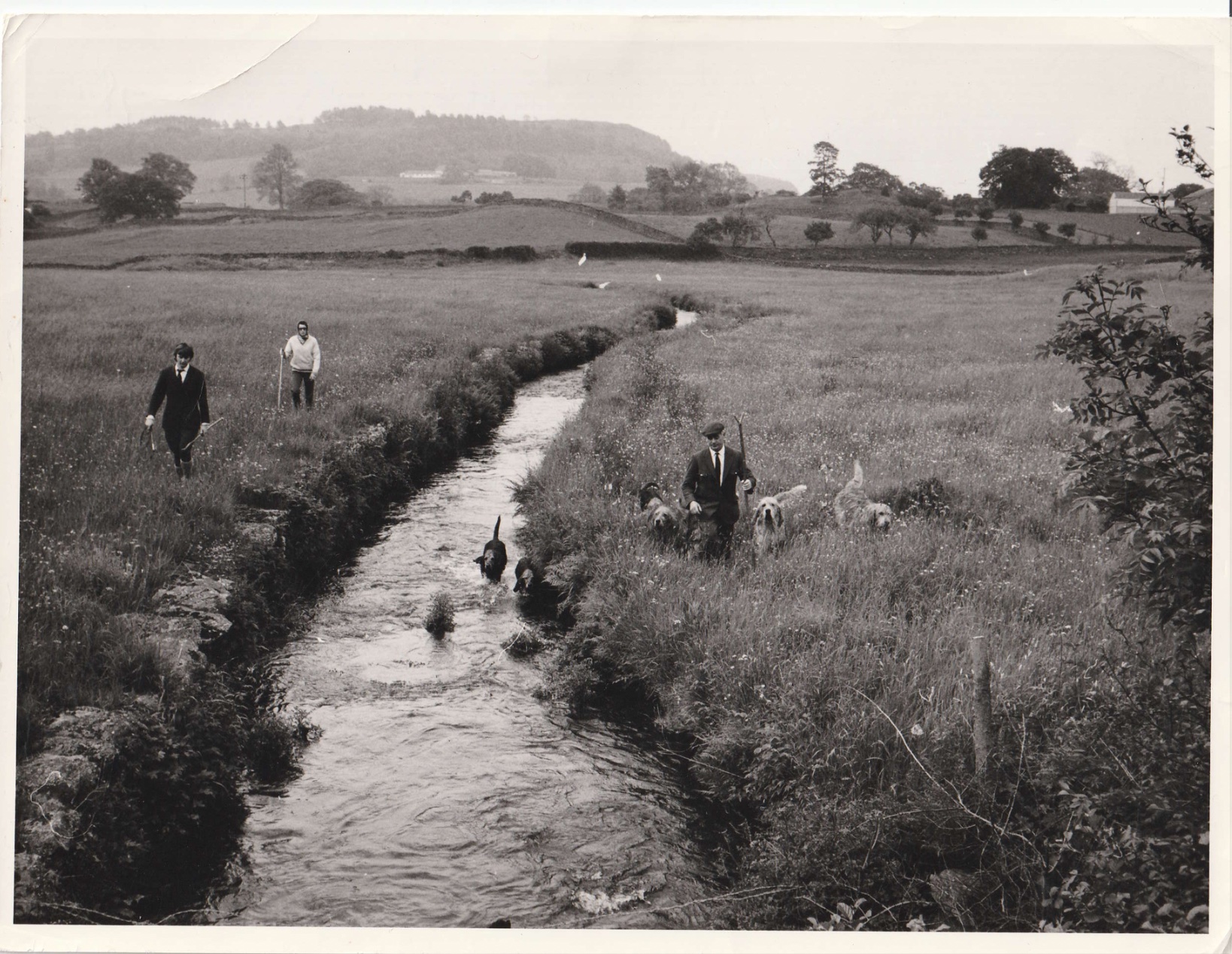A Tribute to Tommy Harrison 1927 – 2021
Tom (Tommy) Harrison, who was the last huntsman of the Kendal and District Otterhounds (KDOH) and the last full-time huntsman in England and Wales, still hunting, when otterhunting was suspended in 1977, died at home aged ninety-three, after a short illness. Whilst the funeral was restricted to family and invited guests, due to COVID restrictions, Tom’s friends from his otterhunting days and the fell foxhound packs were represented. Michael Nicholson, huntsman of the Coniston foxhounds blew the horn at the burial.
Tom was born in Scotland at Eastriggs, home to munitions factories, where the ‘devils porridge’ was manufactured. It was said that Tom was weaned on this since anyone who spent a big part of their life wading through streams, rivers and lakes of Northern England and Southern Scotland, as Tom did, needed to be made of stern stuff and Tom was certainly that.
The family moved to Carlisle when Tom was a boy and he developed an interest in hunting when a neighbour of his, Joe Armstrong, who worked his dogs with the Cumberland Farmers Foxhounds, gave Tom his first terrier when he was thirteen years old. As a small boy, before the war, Tom remembered seeing the Carlisle Otterhounds (COH) returning after hunting to their kennels in Port Road, Carlisle, but never actually hunted with them. The COH suspended hunting during the war years and never started back up again. A hunt club was formed and other packs were invited to hunt their water, which was later divided between the Dumfriesshire Otterhounds (DOH) and the KDOH. Tom recalled that ‘Dalesman’ (Bay De-Courcy Parry) had floated the idea of restarting the West Cumberland with himself as Master and Tom as huntsman, but this never materialised
When otterhunting resumed after the war, Tom started to follow the DOH who hunted waters on both sides of the border close to Carlisle. Billy ‘Bump’ Scott Snr hunted the DOH at that time, and both his son, Billy Scott Jnr and Tom whipped-in to him. When Billy Scott took over from his father in 1950, Tom continued to whip-in to DOH, until he went to the North Yorkshire Otterhounds (NYOH) in 1957.
Tom went as kennel-huntsman to the NYOH in 1957 and stayed until 1963, the NYOH were kennelled at Hornby Park, Bedale, under the tutelage of the Paisley family. Tom was sent to Catterick Army Camp to learn to blow the horn and initially whipped – in to the Master, Tom Paisley, on Saturdays and hunted the hounds mid-week, before taking over full-time the huntsman’s responsibility. He then moved for one season to Callaly, in the West Percy country in Northumberland, when the Northern Counties Otter Hounds (NCOH) were re-formed.
The NYOH consisted primarily of Dumfriesshire foxhounds together with otterhound crosses and English and Welsh cross foxhounds. At one time, the NYOH consisted entirely of Dumfriesshire Foxhounds drafted through Tom Cokerell. The Dumfriesshire foxhounds were Tom’s favourite, having a great voice, able to hold a drag like an otterhound and had the drive and stamina to enable them to keep going all day. Tom’s marathon hunt on the North Tyne (the mask is still on display in the Barrasford Arms), which made the national press for all the wrong reasons, is evidence of this. Dumfriesshire foxhounds however, were not easy to handle, as Roger Westmorland who was at that time a young keeper at Jervaux Estate and whipped-in to Tom, can testify to this on his face-off in the kennels with a big new draft called Jailer, when as Roger put it ‘it was either him or me’ – fortunately, Roger prevailed. Roger and Tom first met in 1959 and the two became great friends, a friendship which continued when moved the former over to the fell foxhound country and became heavily involved with the Lunesdale and Coniston packs,
Tom was a great raconteur and often recalled a hunt on the Derwent when hounds took off up a runner and Tom ran for around a mile before locating hounds, having caught their quarry in heavy cover. To quote Tom –“one hound had the mask, another hound had the rudder, I looked at the mask and then looked at the rudder and there was no way it was the same animal – hounds must have caught a brace”
The rivers Tom hunted in North Yorkshire had much less cover compared to other parts of the country and most of the otters he found were in drains, holts, roots and rock spots. Some places, for example, the old lead mine workings at the top of the Wear, which otters frequented, were not only challenging but dangerous to enter. In the last few years of otterhunting in North Yorkshire, the cover had almost disappeared and hardly any otters were found lying rough. A good terrier was critical in otter hunting and needed to be able to run a wet drain and swim under roots and find and face an otter.
Grip was Tom’s legendary terrier and was given to him by a local farmer. Grip was out of a pedigree wire fox terrier by a cur dog and was twelve months old. The farmer wanted to get rid of Grip because he would not let the tup get anywhere near his ewes! When Tom went to collect Grip, the farmer had him tied up with a rope in a stable because he kept getting out through a very narrow drain pipe. When Tom compared the size of Grip with the width of the drain pipe, he know he was something special. Grip started to work straight away to fox, badger and otter.
Grip used to run loose with him. An otter would sometimes pass through roots and very often hounds would stop and mark. Grip would stand back and when he moved Tom would blow hounds on. Grip could recognise if there was an otter there by which hounds spoke and their voice. Furthermore an otter would always beat a terrier lying face to face. Otters are too quick in the strike and would beat a terrier to the bite. Grip never got bit by an otter and would never leave one. On a hunt just below Marske Bridge, on the River Swale in North Yorkshire, Grip went into a rocky spot at 3 o-clock in the afternoon and Tom got him out the next day at 7 o-clock at night. Twenty minutes later, the otter bolted. Grip had stayed with the otter for twenty-eight hours.
On another occasion, on the Tees, Steven Bushby bet Tom £5 that he couldn’t bolt the otter from a difficult place. £5 was almost a week’s wages for Tom at that time, however, as it was Tom’s cap day, he took the bet on and, with Grip duly obliging, won. Fifty years later we met Steven, who was now farming in the Liddlesdale country in the Borders and he fondly recalled that day. Tom had other good terriers at NYOH such as Bess, a black and tan Lakeland. Grip had died before Tom went to the KDOH, where Tom had Rock, Mick and Dart, a little white Lakeland. Tinker and Tess were the last of Tom’s terriers working with the otterhounds
Tom always rated the rivers in Northumberland as the best waters he ever hunted. These big, fast – flowing spate rivers, posed specific challenges to visiting huntsmen from eastern and southern English based packs. The North Tyne and the Tweed and their tributaries were rivers that rivalled the Blackwater in County Cork for scenting and sport.
Published courtesy of Hounds magazine (June 2021 edition).
